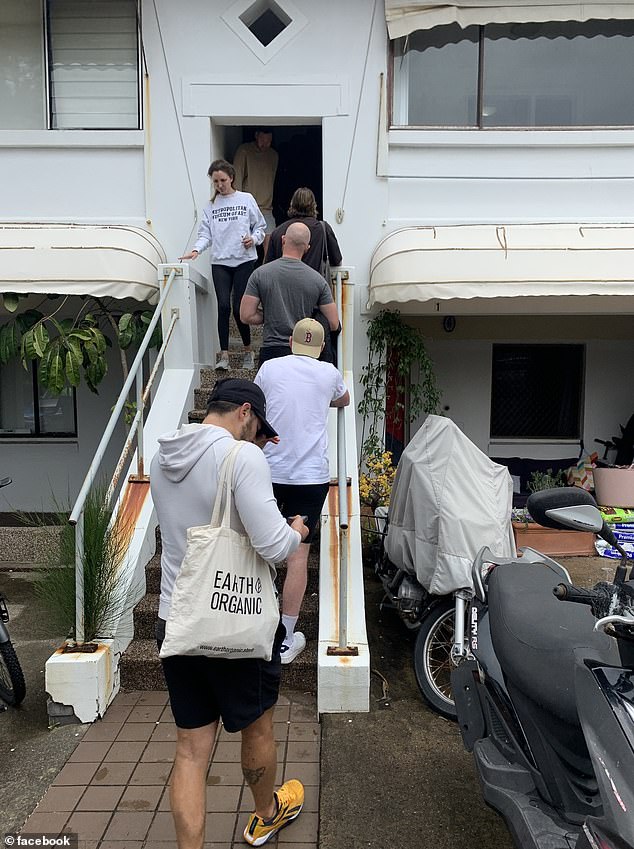The cities where house prices are set to soar due to record-high immigration – as finance guru Mark Bouris sensationally backflips on grim prediction
House prices in Australia are expected to rise over the next two years due to record high immigration and a very tight rental market.
Yellow Brick Road executive chairman Mark Bouris said high immigration would mainly benefit Australians looking to invest in property.
The mortgage magnate told Daily Mail Australia that it is “certainly” a good time for investors.
The real estate market is recovering despite twelve interest rate increases since May 2022.
Mr Bouris said high immigration would mainly benefit investors and landlords – at the expense of renters – with the national vacancy rate at a very tight 1.2 per cent.
House prices in Australia are expected to rise over the next two years due to record high immigration and a very tight rental market (pictured shows Sydney’s Pitt Street Mall)

Mark Bouris, executive chairman of Yellow Brick Road (pictured right with model Monika Radulovic), said high immigration would mainly benefit investors and landlords
“All it’s going to do is put more pressure on rents, upward pressure, so that investors… are definitely interested in buying properties and renting them out,” he said.
“Unfortunately, there is no place for these people to come to Australia to live and most of them have to rent initially.”
A record number of 454,400 migrants moved to Australia in the year to March, with international students returning in droves as recruiters hired skilled migrants to fill the labor shortage.
This is already higher than the Treasury’s budget forecasts of 400,000 new permanent and long-term overseas arrivals in the 2022-2023 financial year.
The federal government expects 1.5 million foreigners will move to Australia in the five years to July 2027.
With inflation still on the high side, interest rates are expected to remain unchanged at their current 11-year high of 4.1 percent in 2024 and early 2025.
Despite this, KPMG’s Residential Property Market Outlook report predicts a rise in property prices from the end of 2023, which would continue until mid-2025 due to record high immigration.
“The post-pandemic recovery in immigration is expected to put significant pressure on housing demand,” said the report by economists Brendan Rynne and Brian Tran.
“Robust population growth and limited housing supply are likely to put more pressure on the rental market.”
It is predicted that Hobart will see the highest growth in property prices as smaller capital cities receive more interstate migration than other parts of Australia.
House prices in Hobart were expected to fall 3.5 per cent in 2023, but will recover next year and rise 6 per cent in June 2024, reaching 11.3 per cent in December 2024 and 14.2 per cent in June 2025.
This would increase the average home price from $690,085 to $835,362.
Melbourne, another city receiving a large share of new foreign arrivals, is expected to see property prices rise by 12 percent by June 2025.
Under that forecast, Melbourne’s median would rise from $918,971 in June this year to $1,080 million by mid-2025.
In Sydney, which is receiving a higher share of new migrants, the average house price was expected to rise 6.2 per cent in the year to December 2023.
Annual growth was expected to slow to 4.7 percent in June 2024, but rise again to 6.6 percent in December 2024 and rise to 10.3 percent in June 2025.
Should this prediction come to fruition, the average house price in Sydney would rise from $1.324 million in June 2023 to $1.529 million by mid-2025, based on data from CoreLogic.

KPMG’s Residential Property Market Outlook report predicts a rise in property prices from late 2023, which would continue until mid-2025, as record high immigration put pressure on the rental market (pictured is potential tenants in Bondi in the east of Sydney)
House prices in Canberra are expected to rise by just 1.2 per cent in 2023, but will accelerate to 4.4 per cent in June 2024, 7 per cent in December 2024 and 9.4 per cent in June 2025.
This would increase average house prices in the national capital from $954,079 to $1,090 million.
House prices in Perth were expected to rise by 8.2 per cent in 2023, before the annual growth rate increased to 8.4 per cent in June 2024, 8 per cent in December 2024 and 8.8 per cent in June 2025.
This would increase the city’s median home price from $615,793 to $726,261 in just two years.
Adelaide, one of Australia’s best-performing housing markets, is expected to see a 6 percent increase in 2023, followed by a 5.8 percent increase in June 2024, a 5.6 percent increase in December 2024 and an increase of 6.8 percent in June 2025.
This would see Adelaide’s average house price rise from $712,421 to $804,996
Darwin in Australia’s tropical north was expected to buck the trend, with prices falling 3.98 percent in 2023, before falling a further 1.5 percent in June 2024, but 2.0 percent in December 2025. would increase by 5 percent and by 5.1 percent in June 2025. .
The price increase over two years would be more modest, rising from $585,782 to $606,422.
Brisbane house prices were expected to rise 3.7 per cent in 2023, slowing to 2.8 per cent in June 2024 and 2.6 per cent in December 2025, before rising to 4.2 per cent in June 2025.
This would increase the city’s home price from $806,781 to $864,204.
Mr Bouris said he is no longer concerned about mortgage stress with borrowers unable to pay their bills, leading to foreclosures as ultra-low two per cent fixed rate periods expire.
“Initially my position was that this would happen, but it didn’t happen,” Bouris said.
“We are in the middle of the cycle where people have to go from fixed to variable, and there is no clear increase, in terms of payment arrears and delinquencies.
“There’s been a slight increase, but it’s still historically low, so just for my own cases we’re seeing a few hardship requests — maybe four or five, I’m not talking hundreds or thousands.
‘I don’t see any mortgage stress at the moment.
‘People have built up savings, people have two or three jobs and an extra job or extra hours, unemployment is relatively low (3.7 percent).’
Mr Bouris said history would also judge kindly the former Reserve Bank governor, Philip Lowe, who ended his term on September 17.
“A lot of people criticized the outgoing RBA governor – perhaps time will tell he was quite competent given the direction inflation seems to be going at the moment,” he said.
Inflation rose to 5.2 percent in August, up from 4.9 percent in July, but is well below the 32-year high of 8.4 percent reached at the end of 2022.
